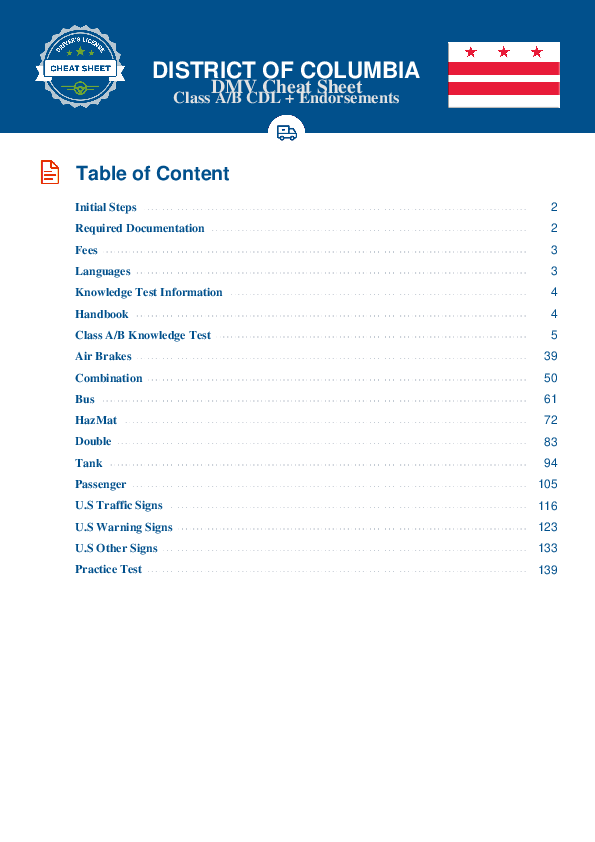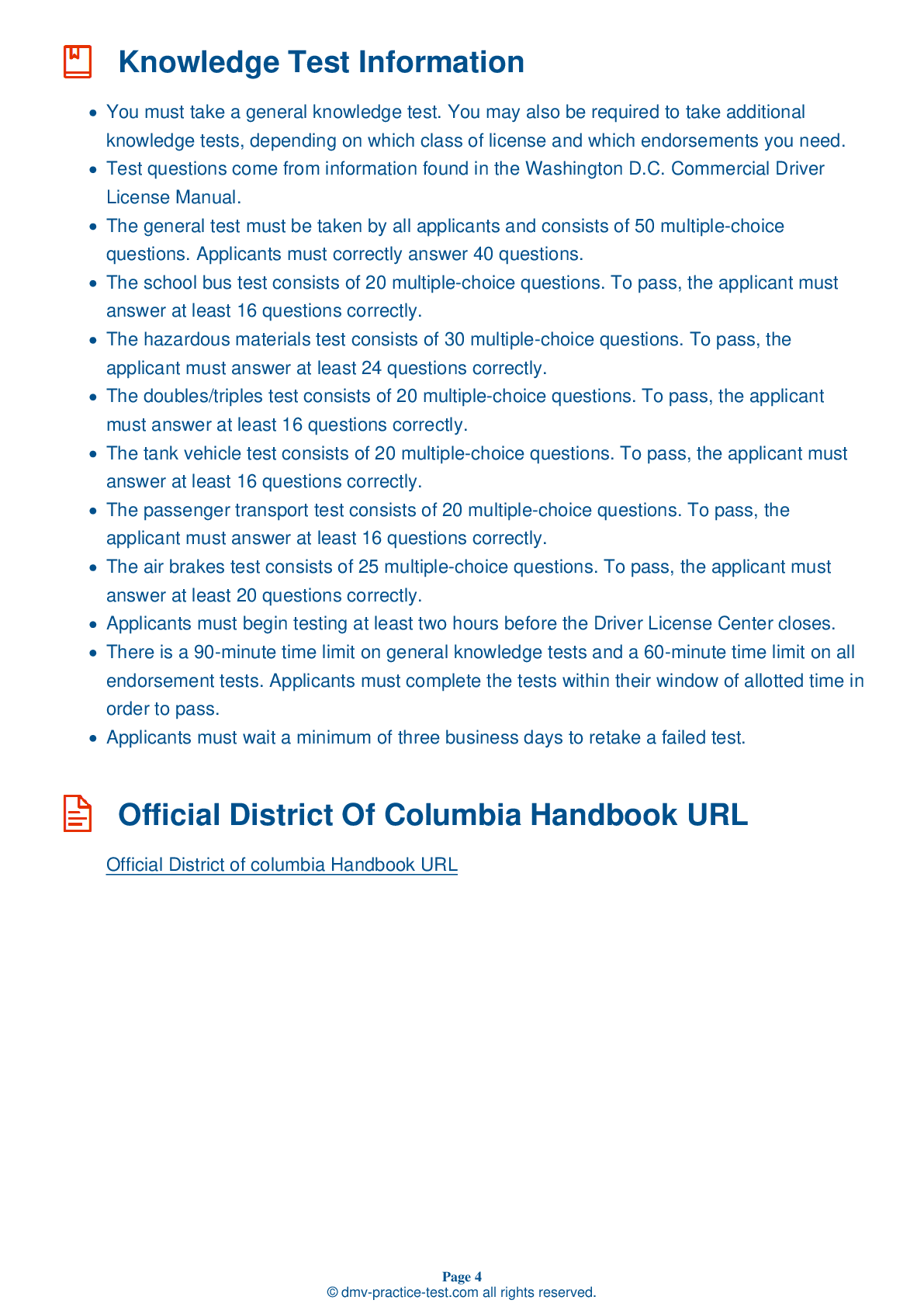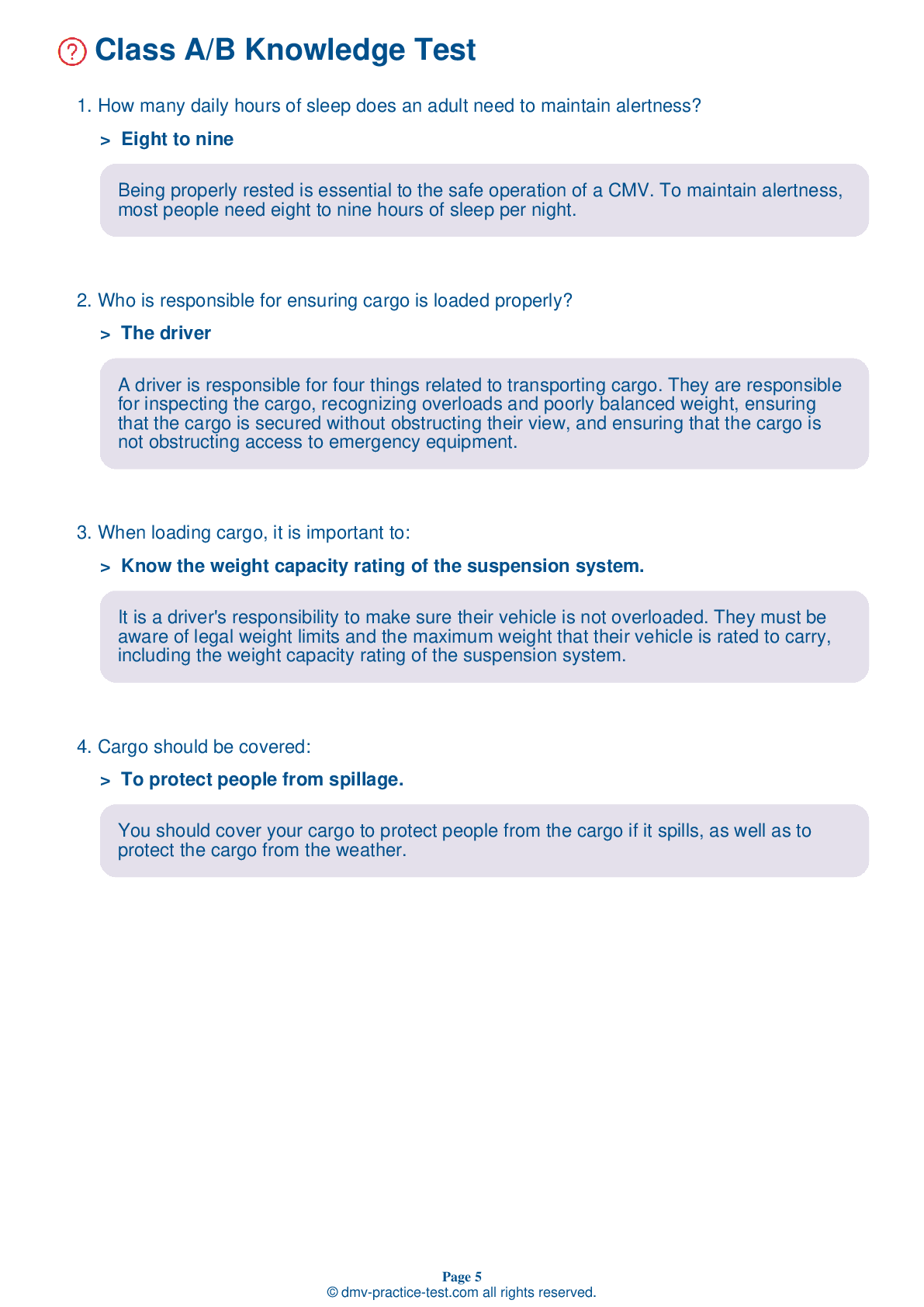Combination #1
Combination Vehicles Practice Test | District Of Columbia 2025 #1 Page 3 of 3
Train for FREE online with our District Of Columbia CDL combination vehicle test. The official exam test consists of several obligatory parts, with all of them checking your knowledge of different blocks of road rules. If you need to obtain a DC combination license in 2025, practice as much as possible. Free sample tests published on our website will help you check and improve your knowledge and boost your grades. Please bear in mind that DMV requirements for issuing a combination license may vary from state to state.
20
16
20
15 . What can the “crack-the-whip” effect do?
Make trucks decelerate.
The "crack-the-whip" effect can cause a trailer to turn over during a lane change. To avoid this phenomenon, drivers should make lane changes at slow, safe speeds.
16 . If a trailer's spring brakes do not release when you push the tractor air supply control, you should:
Drive normally without checking anything.
It is important that all of your vehicle's equipment is in proper working condition before you begin a trip. If a trailer's spring brakes do not release when you push in the tractor air supply control, you should make sure the air line connections are properly attached and sealed.
17 . To prevent a rollover, cargo should be:
Loaded with most weight on the driver’s side of a trailer.
To reduce the risk of rollover, the weight of cargo in a trailer should be centered and spread out as much as possible. The weight of the cargo should also be kept as low to the ground as possible.
18 . In a combination rig, it is best to make:
Slow, planned stops.
When driving a combination vehicle, it is important to brake well in advance and look far ahead of your vehicle to avoid the need for sudden stops. Making habits of these actions will help you prevent your trailer from jackknifing.
19 . If colors are being used to distinguish glad hands, which color is used for service lines?
Blue
When trailer air lines are color-coded, the service lines are generally blue and the emergency lines are generally red.
20 . Compared to other commercial motor vehicles, combination vehicles need more space on the road because they are longer and they:
Swerve more often.
Combination vehicles need more space on the road than other commercial vehicles because they are longer and need more space to turn and stop. It is especially important to properly manage space when you are operating a combination vehicle.
2025 District Of Columbia | Frequently Asked Questions
In the District of Columbia, you can acquire a CDL Tank endorsement by first holding a valid CDL. You need to pass the Tank Vehicle written test, which covers topics like inspecting tank vehicles, driving tank vehicles, and safe driving rules. After passing the test, you pay the required fee to add the endorsement to your CDL.
To obtain a CDL Tank license in the District of Columbia, you must first have a valid Commercial Driver's License (CDL). Then, you must take and pass the Tank Vehicle written test, which covers topics such as inspecting and driving tank vehicles, and safe driving rules. After passing, pay the necessary fee to add the endorsement to your CDL.
While the District of Columbia doesn't explicitly require specific training or experience for a CDL Tank endorsement, it's highly recommended. Understanding how to safely operate tank vehicles is crucial. Passing the Tank Vehicle Endorsement Knowledge Test requires knowledge of tank vehicle operations, so training or experience can be beneficial in passing the test.
Yes, for a CDL Tank endorsement in the District of Columbia, you must pass the Tank Vehicle written test. This exam covers important topics like inspecting tank vehicles, driving tank vehicles, and safe driving rules. Passing this test is crucial to demonstrate your knowledge and understanding of operating tank vehicles safely.
The written test for the CDL Tank endorsement in the District of Columbia covers a variety of subjects. These include inspecting tank vehicles, driving tank vehicles, and understanding the unique handling characteristics of tank vehicles. It also tests knowledge on safe driving rules and regulations specific to tank vehicles.
During the CDL Tank endorsement assessment, several skills and maneuvers are assessed. These include inspecting the tank vehicle for safety, demonstrating proper loading and unloading procedures, controlling the vehicle's speed and position, performing backing maneuvers, and executing turns and lane changes safely. Additionally, candidates are evaluated on their ability to handle emergency situations and demonstrate knowledge of hazardous materials regulations.
Drivers with a CDL Tank endorsement in the District of Columbia must comply with specific federal and state regulations. These include restrictions on maximum driving hours to prevent fatigue, mandatory rest periods, and stringent vehicle inspection requirements. Additionally, they must follow rules related to the transportation of hazardous materials if their tank vehicle is used for such purposes.
No, a valid CDL Tank endorsement is required to legally transport liquid or gas materials in the District of Columbia. This endorsement is necessary due to the unique handling and safety requirements associated with transporting such materials. Violating this requirement can result in significant penalties, including fines and suspension of driving privileges.
You can add the CDL Tank endorsement to your existing Commercial Driver's License (CDL) without needing a fresh application. However, you will need to pass a written knowledge test specific to tank vehicles and pay the necessary endorsement fee. Remember, additional endorsements may require further testing.
Yes, to handle hazardous materials with a CDL Tank endorsement, you must also obtain a Hazardous Materials (HazMat) endorsement. This requires passing an additional written test and undergoing a federal background check. Also, adherence to specific regulations regarding the transportation and handling of such materials is mandatory.



